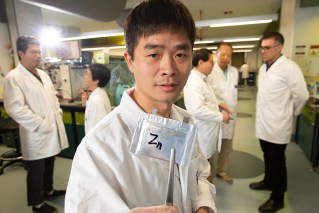Authority’s warning shot: Emission targets will fail unless technology delivers
Australia could fail on emissions reduction commitments unless climate engineering technologies are accepted, a federal body warns.

The Environmental Protection Agency is tightening rules that limit emissions of mercury and other harmful pollutants from coal-fired power plants, updating standards imposed more than a decade ago. (AP Photo/Charlie Riedel, File)
Technically feasible, cost effective and socially acceptable routes to net zero must combine ambitious emissions reductions with “carbon dioxide removals” at far greater scale, according to the Climate Change Authority (CCA).
A report by the key advisor is one of two released on Monday strongly urging government to step up Australia’s climate commitments.
The other, issued by the Clean Energy Investor Group, calculates that investment of $421 billion is needed for the nation to align with growing global ambitions for limiting climate change to 1.5C.
The CCA research concludes there is no single technology that will be a silver bullet.
“While reducing emissions at source is critical, the extent of the climate challenge means there must be effort directed to sequestration,” CEO Brad Archer said.
“That includes developing a carefully designed portfolio of approaches, as no single technology can achieve the levels of sequestration likely to be needed.”
The Intergovernmental Panel on Climate Change estimates that for a 50 per cent chance of limiting global warming to below 1.5C, about six billion tonnes of emissions must be removed globally per year by 2050.
Key trading partners are likely to drive market demand for sequestration technologies.
For example, with limited availability of geological and biological storage capacity of their own, Japan and Singapore are expected to need to export carbon for storage in other countries to meet international climate pledges.
The CCA report recommends Australia take the lead internationally on developing new rules, definitions and standards for future trade.
It also recommends separate targets for emissions reduction and carbon removal to help guard against sequestration being used as an excuse to delay cutting emissions at their source.
Carbon dioxide removal (CDR) technologies backed in the report include an Australian project using solar-powered direct air capture to suck in emissions and pump them underground.
Such technologies are not eligible for generating Australian carbon credits but could win future approval.
An expanded role is recommended in the report for the taxpayer-funded Australian Renewable Energy Agency, Clean Energy Finance Corporation (CEFC) or new specialist institutions to accelerate the use of affordable CDR for more rapid decarbonisation.
Meanwhile, CEFC director Tim Buckley says the Clean Energy Investor Group’s findings on Australia’s 1.5C alignment demonstrates that a dramatic lift in momentum is required.
The study found Australia needs to invest in long duration storage to bolster reliability and security during energy droughts; support offshore wind development despite it probably not being cost-competitive until the 2040s; and accelerate network infrastructure builds.
Monday’s large release of research findings follows CSIRO’s first stocktake of carbon sequestration potential and the propspect of achieving net negative emissions.
Net negative means taking more greenhouse gases out of the atmosphere being emitted, which would remove historic emissions built up over the centuries since the industrial revolution.
The CCA report reiterates Australia has abundant land and renewable energy resources, significant capacity for carbon to be pumped deep underground and vast marine areas available.
Engineered technologies are expected to account for an increasingly larger share – overtaking nature-based carbon storage – and become a global industry.












